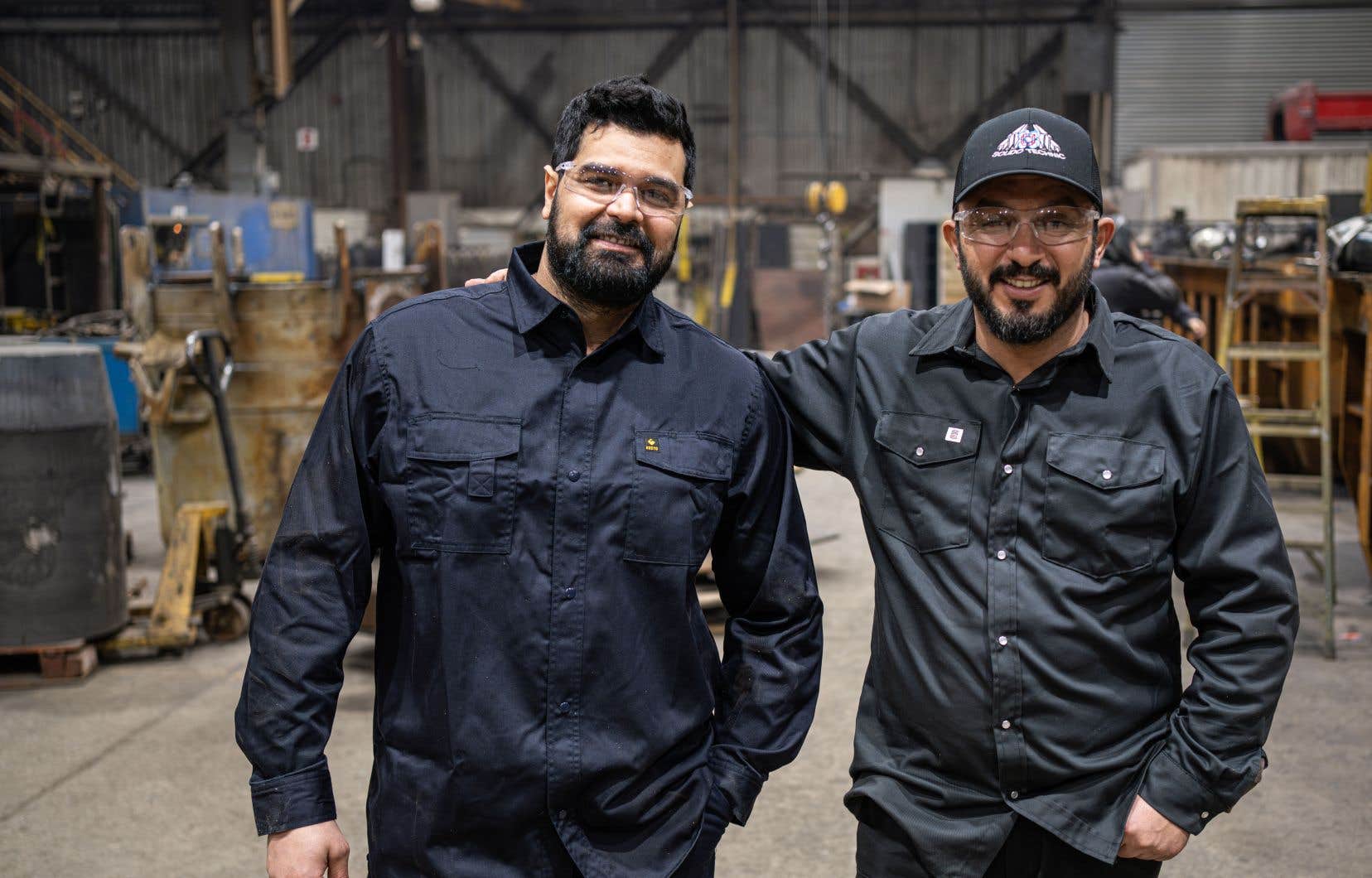The North Shore, a vast and largely uninhabited territory, is suffering from the worst demographic decline in Quebec. Despite its remoteness, harsh winters and difficult access, the region still manages to attract new arrivals. The duty traveled its coastline over 800 kilometers to understand the reasons that lead these immigrants to the ends of the earth. Last in a series of four texts.
Hard to find a North Shore company that doesn’t hire or doesn’t consider hiring temporary foreign workers. Their presence today even supplants that of so-called “permanent” immigrants. A solution to the shortage of labor that is in no way a miracle.
The logs move at breakneck speed at the Outardes sawmill in Baie-Comeau. The freshly cut two-by-fours, at a frantic pace, pass before pairs of eyes who had never seen snow before this winter. Here, over the past year, around 15 international workers have been added to the total force of 180 employees.
Living in Quebec, “it was a dream far from my reality,” says Yves Koutou, recruited by the forestry company in Ivory Coast. Everything went very quickly for him too. He found himself on the Baie-Comeau tarmac after only nine months of preparation. “The speed with which [il est] came” still surprises him. “At first, I wondered what I could be doing here. But the first smile I was given when I disembarked… It’s worth gold! »
His pair of arms are also worth gold. Thanks to “temporary workers”, the forestry company has increased its work rate. From two shifts per day, the factory now operates 24 hours a day. Management hopes to be able to add weekends to the production schedule once the rest of the reinforcements arrive next spring.
“Three years ago, it was an ordeal. We didn’t know where we were going with [le recrutement international]. Then today, it’s a culture almost for each of the managers,” says Mario Bélanger, the director of the sawmill.
All of its employees fall into the “temporary” category, although they live on the North Shore all year round. They must work for a specific employer and for a maximum period of three years. Although their number is difficult to estimate in Manicouagan, they undoubtedly form the majority of people born abroad. In Sept-Îles, there are 75% temporary workers and 25% permanent workers. “And again, these are conservative numbers,” says the head of the Sept-based organization Alpha Lira, Hélène Lejeune.
Large, small and medium businesses
The major clients are far from being the only ones to request this more or less specialized workforce. SMEs, eager for quickly operational staff, hire these temporary workers by the dozen.
Like in this Soudo Technic team, installed in a large industrial building in Sept-Îles. Here, the aluminum foundry tanks are repaired using welding and hammer blows. Of the fifty employees, around half come from Tunisia.
After welding on construction sites in Turkey and Libya, Adnan Ben Belgacem hopes to be able to work for a long time in Sept-Îles, despite a contract that will expire. “We want to make our life here,” he assures us. The conditions are very good. If we are sick, we don’t come to work. If we want to work overtime, we can do it. »
“I come here for the money and to work,” adds his colleague Raed Ghemigui. I became a team leader, I am well integrated. I want to stay here. »
All employees interviewed by The duty in the context of this report would like to obtain permanent residence after their temporary contract. Nothing is less certain, however, despite the windfall they represent for a region incapable of renewing its population. Quebec caps the number of permanent immigrants admitted each year at 50,000, while the number of temporary ones is much higher than this figure.
However, the process of integrating these temporary immigrants is well underway. The local Steelworkers union offers “Québécois 101” courses to some and “Tunisians 101” to others to cushion the shock of cultures. “It’s a bit like when the women arrived [sur les chantiers] “, says union leader, Nelson Breton.
In Baie-Comeau, we opted for a “cultural code” in order to establish the contours of the new way of living together. First, French is required at all times, to avoid misunderstandings. Then, we explain respect for women’s rights and freedoms. Finally, religion must remain confined to private practice.
When passing the Duty, the confusion seemed swept under the carpet of good understanding. Jérémie, who supervises three Congolese recently arrived in Baie-Comeau, has fun with his new colleagues. “I didn’t know it, but they’re brothers!” They complement each other. They’re funny to watch,” he says through the noise of the sawmill.
Engine of growth… and precariousness
Small villages are not immune to this recent wave of so-called temporary immigration. In Longue-Pointe-de-Mingan, a small village that largely lives off seafood, 67 Mexicans arrived last spring to peel crab or bourgots. There will be 84 of them returning next fishing season.
These Mexicans are “critical” for the Poseidon company, explains Johanna Vieira, responsible for their visit. “All” would like to stay in Quebec, settle on the North Shore permanently. “No one wants to return to their country. » Except that here, it is the seasonal nature of the work that relegates these immigrants to uncertainty.
Because, all things considered, there are not only good things about these officially temporary workers. Those who work in small businesses, those hired at minimum wage, are increasingly turning to food banks to survive their Quebec dream. Just three years ago, this type of emergency aid “never, ever” arrived, according to an immigration official in Baie-Comeau. “It’s happening now. »
This report is supported by the Local Journalism Initiative, funded by the Government of Canada.
